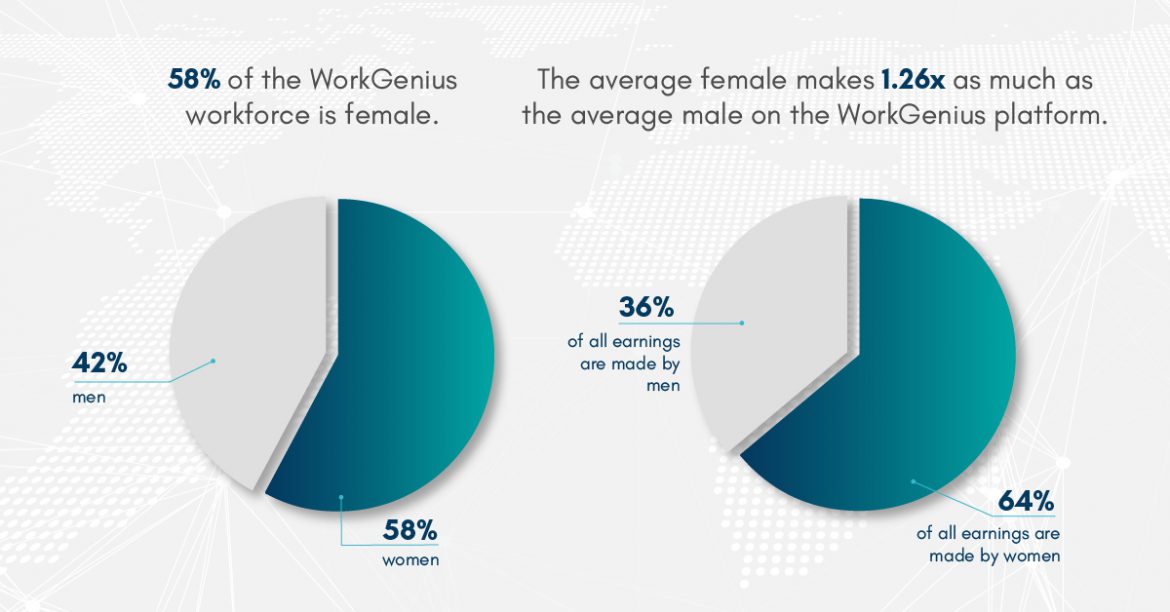Blind recruiting is a process in which job candidates are evaluated without being identified by personal details such as name, gender, age, or race. This method, which is very common in the USA, aims to eliminate bias and discrimination in the hiring process, which can have a significant impact on the diversity and inclusivity of a company’s workforce.
According to a study by the Harvard Business Review, resumes with “white-sounding” names are 50% more likely to receive callbacks for interviews than those with “black-sounding” names, despite identical qualifications. Similarly, women are often overlooked for leadership positions due to implicit biases and stereotyping. Blind recruiting aims to level the playing field and provide an equal opportunity for all candidates, regardless of their personal characteristics.
By removing personal details, employers can focus solely on the qualifications and skills of each candidate. This can lead to a more inclusive workplace culture, as employees from diverse backgrounds bring different perspectives and experiences to the table.
Blind recruiting also helps companies avoid potential legal issues related to discrimination in hiring. Discrimination based on personal characteristics such as race, gender, age, or disability is illegal in many countries, and companies that engage in discriminatory hiring practices can face legal action. By using blind recruiting, companies can ensure that they are evaluating candidates solely on their qualifications and skills, rather than any personal characteristics.
Another advantage of blind recruiting is that it can improve the quality of hires. When personal characteristics are removed from the hiring process, employers are forced to focus on what really matters – the candidate’s abilities and fit for the role. This can lead to a more thorough evaluation of each candidate, as employers are less likely to be swayed by superficial factors such as appearance or personal connections.
A study by the University of Toronto found that only 10 per cent of black job applicants — created by researchers based on real candidate profiles — received callbacks for job interviews if they stuck to their African names and experience with black organizations. However, the callback rate went up to 25.5 per cent if their names were “whitened” and their black experience was removed from their resumés. In such cases, blind recruiting could help eliminate bias and lead to fairer and more accurate hiring decisions.
Despite these advantages, blind recruiting is not without its challenges. One of the biggest obstacles is the difficulty of anonymizing certain aspects of the hiring process, such as interviews or in-person assessments. While resumes and applications can easily be stripped of personal details, employers may still have access to this information during later stages of the hiring process. Additionally, some critics argue that blind recruiting may not necessarily lead to a more diverse workforce if companies do not actively seek out diverse candidates.
However, there are ways to overcome these challenges and ensure that blind recruiting is effective. For example, employers can use structured interviews and standardized assessments to reduce the impact of personal biases during in-person evaluations. Additionally, companies can actively seek out diverse candidates through targeted recruitment efforts, such as partnering with organizations that support underrepresented groups or attending job fairs in diverse communities.
In conclusion, blind recruiting has the potential to revolutionize the recruitment process and create more inclusive and diverse workplaces. By removing personal details from the evaluation process, employers can focus on the qualifications and skills of each candidate, leading to more objective and accurate hiring decisions. Furthermore, blind recruiting can help companies avoid potential legal issues related to discrimination and improve the quality of hires.




























